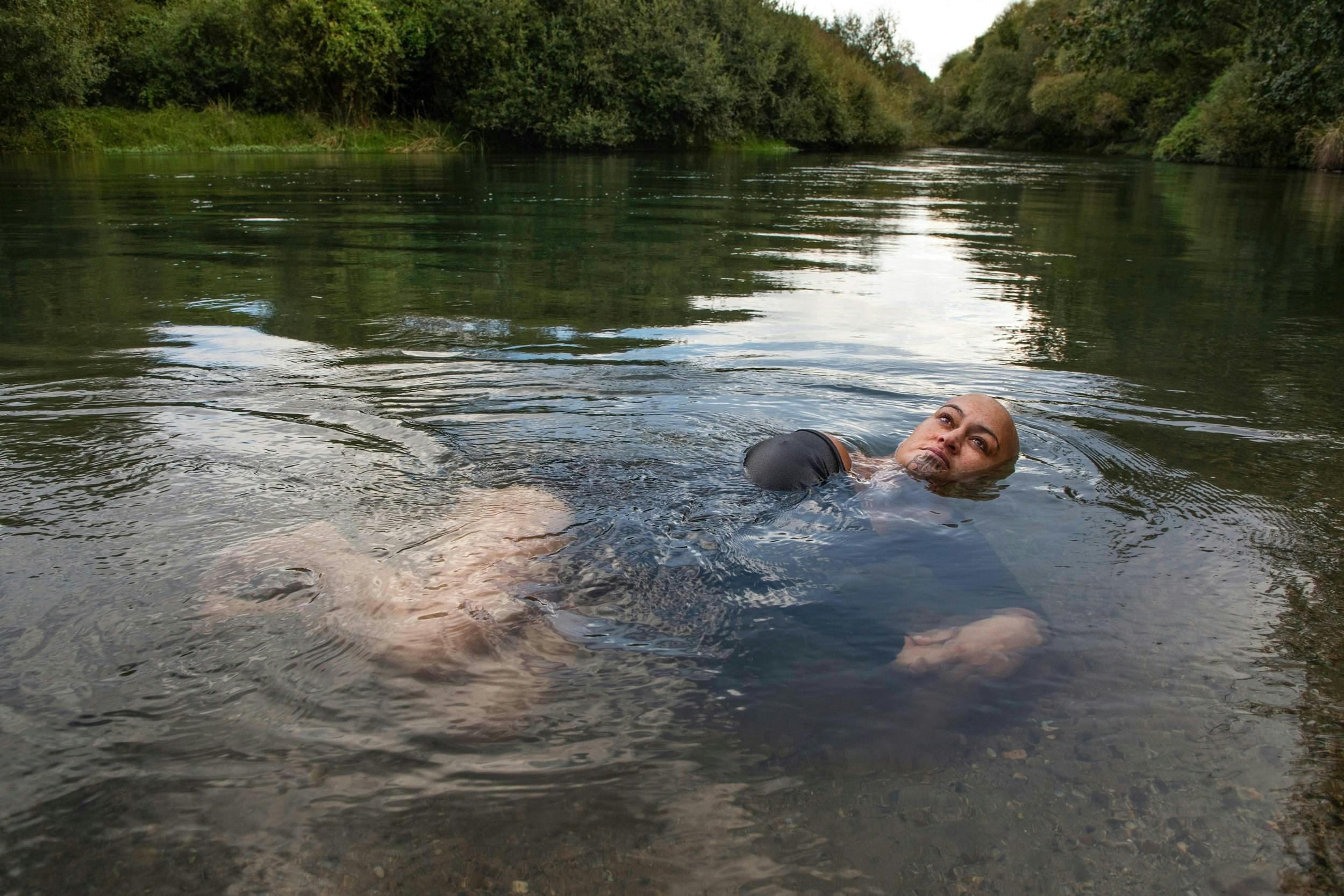
Ko Te Awa Ko Au Darling Darz 2022 framed photograph Gift of Friends of Waikato Museum Gallery Collection of Te Whare Taonga o Waikato Museum Gallery
Photo Credit

Ko Te Awa Ko Au Darling Darz 2022 framed photograph Gift of Friends of Waikato Museum Gallery Collection of Te Whare Taonga o Waikato Museum Gallery
Photo Credit
A photographic exploration of whakapapa, whenua, and wairua, Darling – Tēnei Au follows the journey of Darling, a wāhine who embraces her mana motuhake through her connection to our awa, Tarawera—an awa that belongs to both Darling and me. The awa is her sanctuary, washing away her past and restoring her wairua. Through portraiture and kōrero, this work speaks to transformation, resilience, and healing—aligning with Matariki as a time of reflection and renewal. It is a tribute to those who have passed, those who remain, and the strength in reclaiming one’s own story.
Sara Tautuku Orme (Ngāti Awa, Te Arawa; Ngāti Whākaue, Ngāti Tarawhai, Ngāti Pikiao) is a Tāmaki Makaurau-based photographer and social documentarian with a background in sociology and kaupapa Māori storytelling. Her work explores whakapapa, Māori identity, mana motuhake, and the enduring impacts of colonisation, often through intimate portraiture and oral histories.
A photographic exploration of whakapapa, whenua, and wairua, Darling – Tēnei Au follows the journey of Darling, a wāhine who embraces her mana motuhake through her connection to our awa, Tarawera—an awa that belongs to both Darling and me. The awa is her sanctuary, washing away her past and restoring her wairua. Through portraiture and kōrero, this work speaks to transformation, resilience, and healing—aligning with Matariki as a time of reflection and renewal. It is a tribute to those who have passed, those who remain, and the strength in reclaiming one’s own story.
Sara Tautuku Orme (Ngāti Awa, Te Arawa; Ngāti Whākaue, Ngāti Tarawhai, Ngāti Pikiao) is a Tāmaki Makaurau-based photographer and social documentarian with a background in sociology and kaupapa Māori storytelling. Her work explores whakapapa, Māori identity, mana motuhake, and the enduring impacts of colonisation, often through intimate portraiture and oral histories.